Most hybrid drivers don’t get the full fuel savings their car is capable of. It’s not the battery size or the engine type-it’s how you drive. If you’re still treating your hybrid like a regular gas car, you’re leaving up to 20% of your potential mileage on the table. The secret isn’t in the tech-it’s in your foot.
How Regenerative Braking Really Works
Regenerative braking isn’t magic. When you lift off the accelerator in a hybrid, the electric motor flips into generator mode. Instead of wasting energy as heat through brake pads, it slows the car down by turning the wheels into a power source. That energy goes straight back into the battery. In city driving, this can recover 30% to 50% of the energy you’d normally lose when braking.
Toyota Prius drivers see this most clearly. At 25 mph, lifting off the gas fully can bring the car to a stop without ever touching the brake pedal. The car slows with a gentle, consistent pull-not a jolt. That’s regenerative braking doing its job. The brake lights come on only when you press the pedal, so other drivers know you’re stopping, not just coasting.
Don’t confuse this with engine braking in a manual car. Regenerative braking doesn’t rely on engine compression. It’s pure electrical resistance. And it’s smarter than you think. Modern hybrids adjust how much regeneration happens based on battery charge, road grade, and even traffic ahead.
Coasting Is Your Secret Weapon
Coasting isn’t laziness-it’s strategy. When you’re approaching a red light, a stop sign, or even slow traffic ahead, lift your foot off the gas early. Let the car roll. The hybrid system will automatically engage regenerative braking to slow you down while charging the battery.
Try this next time you’re on a road with a steady speed limit: at 55 mph, lift off the gas 400 feet before a red light. Don’t brake. Don’t accelerate. Just coast. You’ll likely stop right at the line, with no brake use at all. That’s one less fuel cycle needed. No engine restart. No wasted energy.
Some hybrids, like the Honda Insight, even have a “B” mode that increases regeneration strength. Use it on downhill stretches. You’ll reduce brake wear and keep the battery topped up without using a drop of gas.
Coasting works best when you’re not in a hurry. Don’t try to race to the next light. Anticipate. Scan ahead. Look for brake lights three cars down. That’s your cue to ease off the gas now, not five seconds later.
Stop Braking So Much
Brake pads on hybrids last longer than on gas cars-but only if you use them less. If you’re constantly tapping the brake pedal, you’re defeating the purpose of regenerative braking. Every time you press the pedal, you’re switching from efficient electric braking to friction braking, which wastes energy.
Here’s a simple rule: use your right foot for both acceleration and deceleration. No left-foot braking. That means if you’re slowing down, you’re lifting off the gas, not pressing a second pedal. Your brain needs to rewire this habit. Start by practicing in empty parking lots. Lift off the gas and feel how smoothly the car slows. Then try it on quiet streets.
Hybrids like the Hyundai Ioniq and Ford Escape Hybrid have a feature called “one-pedal driving.” It lets you drive almost entirely with the accelerator pedal. Press it to go. Release it to stop. No brake pedal needed unless you’re in a hurry. If your car has it, turn it on. It’s the easiest way to train yourself.
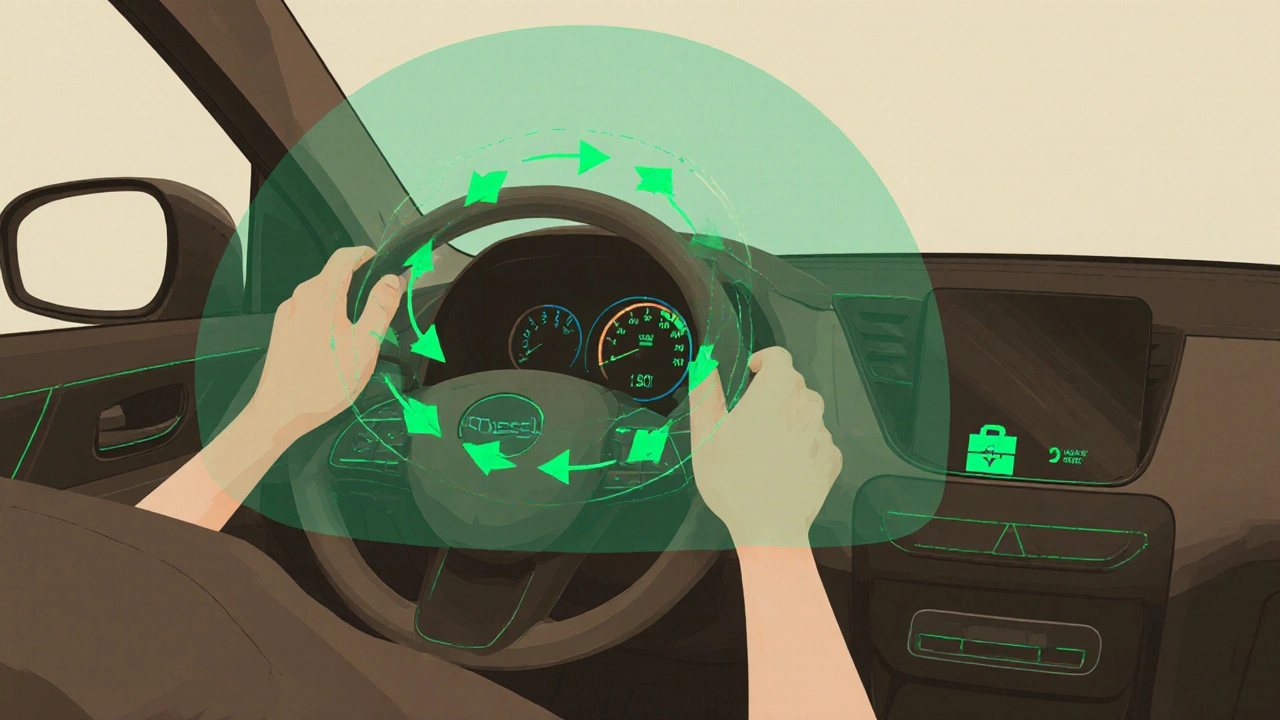
When to Use Electric Mode vs. Gas Mode
Hybrids don’t just switch between gas and electric randomly. They follow logic based on speed, load, battery charge, and temperature. But you can influence it.
At low speeds-under 40 mph-on flat roads, most hybrids run on electric power alone. That’s your sweet spot. If you’re driving in town, keep your speed steady. Avoid rapid acceleration. That’s when the gas engine kicks in to help. A smooth, gradual push from the gas pedal keeps you in EV mode longer.
On highways, hybrids often switch to gas power because electric motors aren’t as efficient at high speeds. But here’s the trick: cruise control doesn’t always save fuel. In fact, it can force the engine to work harder to maintain speed on hills. Instead, let the car’s system manage it. Use the accelerator lightly and let the hybrid decide when to use electric or gas.
Some hybrids have an “EV” button. Use it only when you’re sure you have enough battery charge and are driving in low-speed zones. Running on electric in heavy traffic or stop-and-go is where you save the most.
Real-World Fuel Savings You Can Expect
According to EPA testing, drivers who use regenerative braking and coasting techniques consistently see 15% to 25% better fuel economy than those who don’t. One study by the National Renewable Energy Laboratory tracked 1,200 hybrid drivers over six months. Those who practiced smooth, anticipatory driving improved their MPG by an average of 18.4%.
That’s not theoretical. If you drive 12,000 miles a year and your hybrid gets 45 mpg, improving to 53 mpg saves you 18 gallons of gas. At $3.75 a gallon, that’s $67.50 a year. Do that for five years? That’s $337.50-and less wear on your brakes.
It’s not about driving slowly. It’s about driving smarter. You can still merge onto the highway, pass cars, and keep up with traffic. You just do it with intention.

Common Mistakes That Waste Fuel
Here are the top three mistakes hybrid drivers make:
- Waiting too long to lift off the gas. You’re 20 feet from the light and you finally let up. Too late. You’re already wasting momentum.
- Pressing the brake pedal to stop. Even if you’re just slowing a little. Let regen do it.
- Driving with the climate control maxed out. Heating and cooling pull power from the battery. Set it to 72°F instead of 78°F. You’ll save energy without sacrificing comfort.
Another trap: charging the battery to 100% all the time. Most hybrids don’t need it. The system is designed to keep the battery between 40% and 80% for optimal efficiency and longevity. If your car shows a full charge, don’t worry. It’s not underperforming-it’s optimized.
What to Do in Winter
Battery efficiency drops in cold weather. That’s normal. But you can still drive efficiently.
Pre-warm your car while it’s plugged in, if your hybrid supports it. That keeps the battery warm and reduces the need for the gas engine to run just to heat the cabin. If you can’t plug in, drive gently for the first 5 to 10 minutes. Avoid hard acceleration. Let the engine warm up naturally.
Regenerative braking still works in the cold, but it’s weaker. That’s because the battery can’t accept charge as quickly when it’s cold. So you might need to use the brake pedal more. That’s okay. Just keep the same smooth habits. You’ll still save more than you lose.
Practice Makes Perfect
Mastering hybrid driving takes a few weeks. Start small. Pick one road you drive often. Practice lifting off the gas early. Notice how the car slows. Watch the energy flow meter-most hybrids show a green bar when regen is active. That’s your reward signal.
After a month, you’ll notice your fuel economy improve without trying. You’ll also feel less stress. No more last-minute braking. No more engine revving. Just smooth, quiet, efficient motion.
Hybrids aren’t just about saving fuel. They’re about changing how you drive. Once you get it, you won’t want to go back to how you drove before.
Does regenerative braking wear out the brakes faster?
No, it does the opposite. Regenerative braking reduces the need for traditional friction brakes. Most hybrid owners report brake pad life lasting 80,000 to 120,000 miles-nearly double that of gas cars. You’re replacing brake wear with battery charging.
Can I turn off regenerative braking?
Most hybrids don’t let you fully disable it. It’s built into the drivetrain for efficiency and safety. Some models, like the Toyota Prius, offer different regeneration levels via a button, but you can’t turn it off completely. That’s by design-regen is where most of the fuel savings come from.
Does coasting in neutral save fuel in hybrids?
No. Shifting to neutral disables regenerative braking and forces the engine to idle, which uses more fuel. Hybrids are designed to coast in drive mode. The system automatically cuts fuel when you lift off the gas and engages regen to slow the car. Neutral does the opposite.
Why does my hybrid’s battery never charge to 100%?
Hybrid batteries are intentionally kept between 40% and 80% to extend their lifespan. Charging to 100% regularly causes stress and heat buildup. The system is optimized for efficiency, not full capacity. A 70% charge is normal and ideal.
Do hybrid cars need special maintenance for regenerative braking?
No. The regenerative system is sealed and self-maintaining. You don’t need to service it. Just follow the manufacturer’s regular maintenance schedule. The only thing that might need attention is the brake fluid, which should be changed every 2 to 3 years as a precaution, not because of regen.
Start tomorrow. On your next drive, lift off the gas 50 feet earlier than usual. Watch the energy meter. Feel the smooth slowdown. That’s your new normal. You’re not just saving gas-you’re driving better.
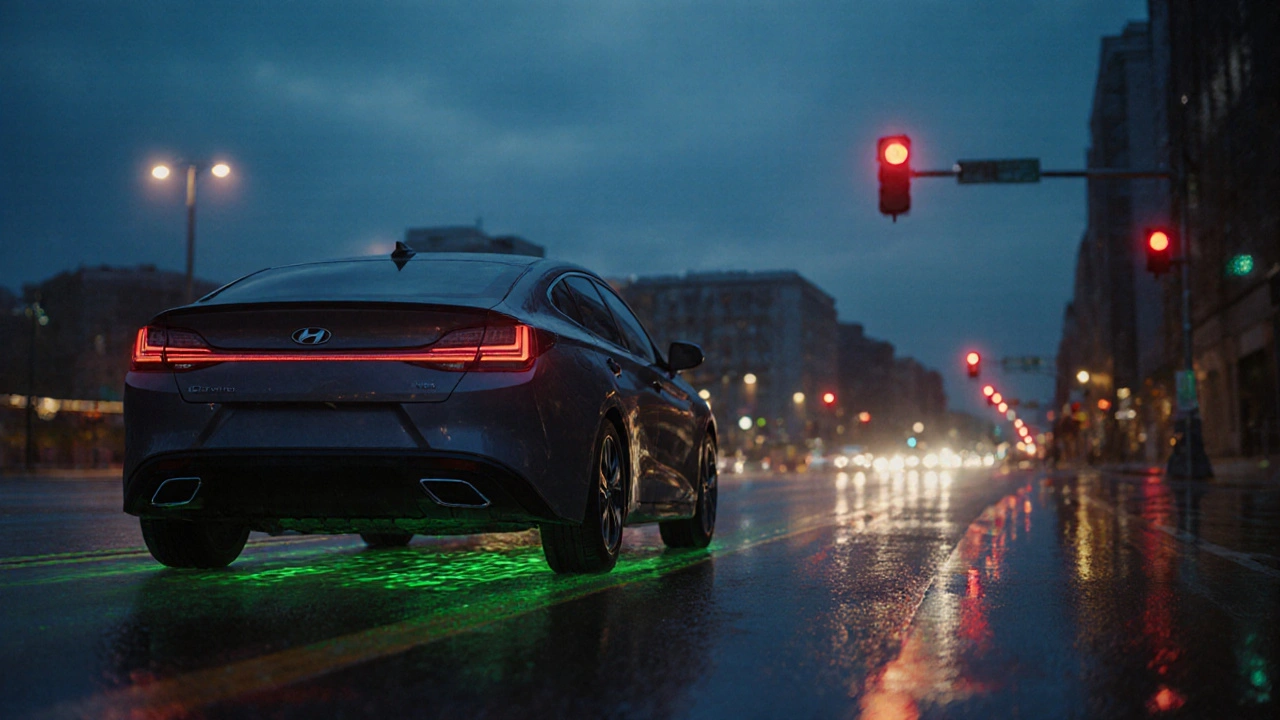
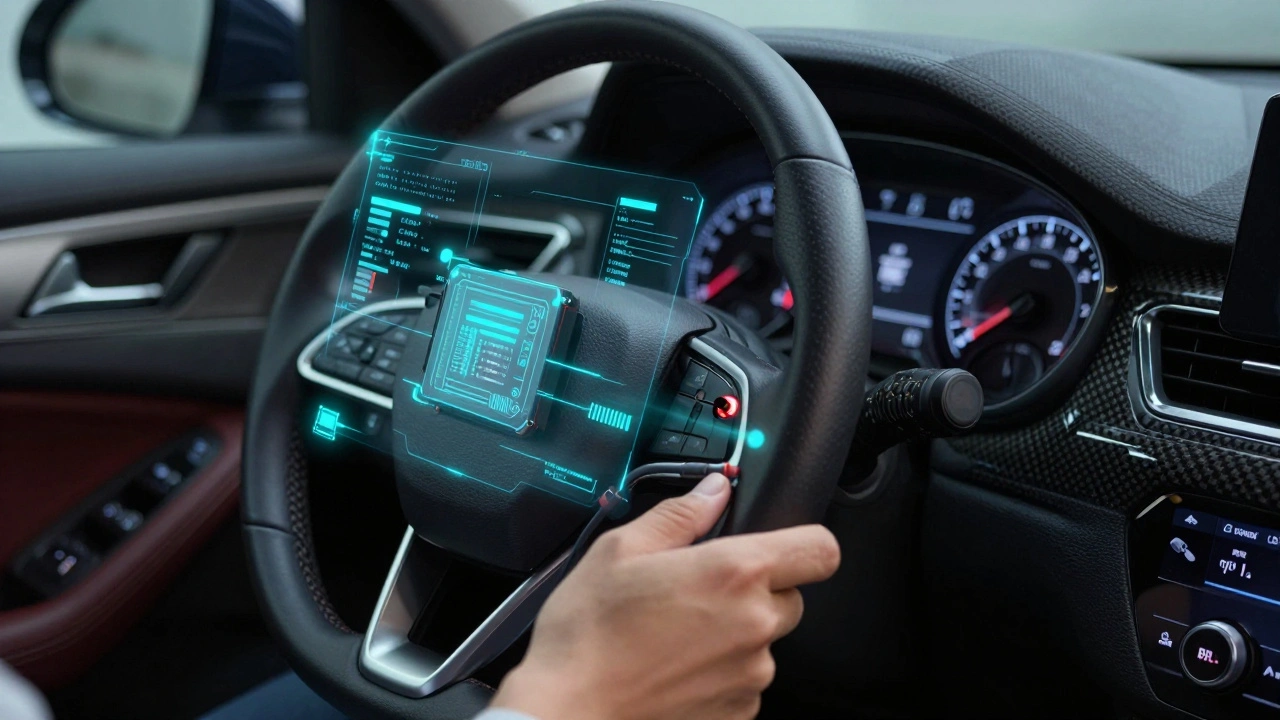
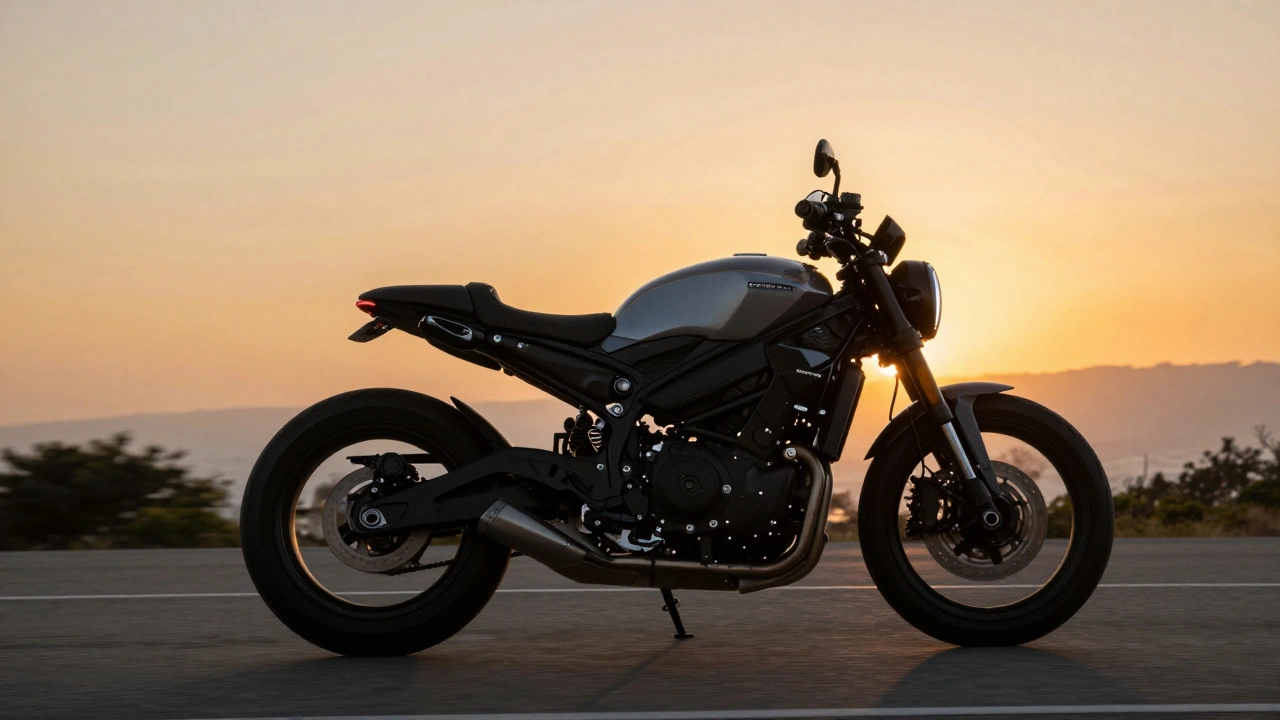
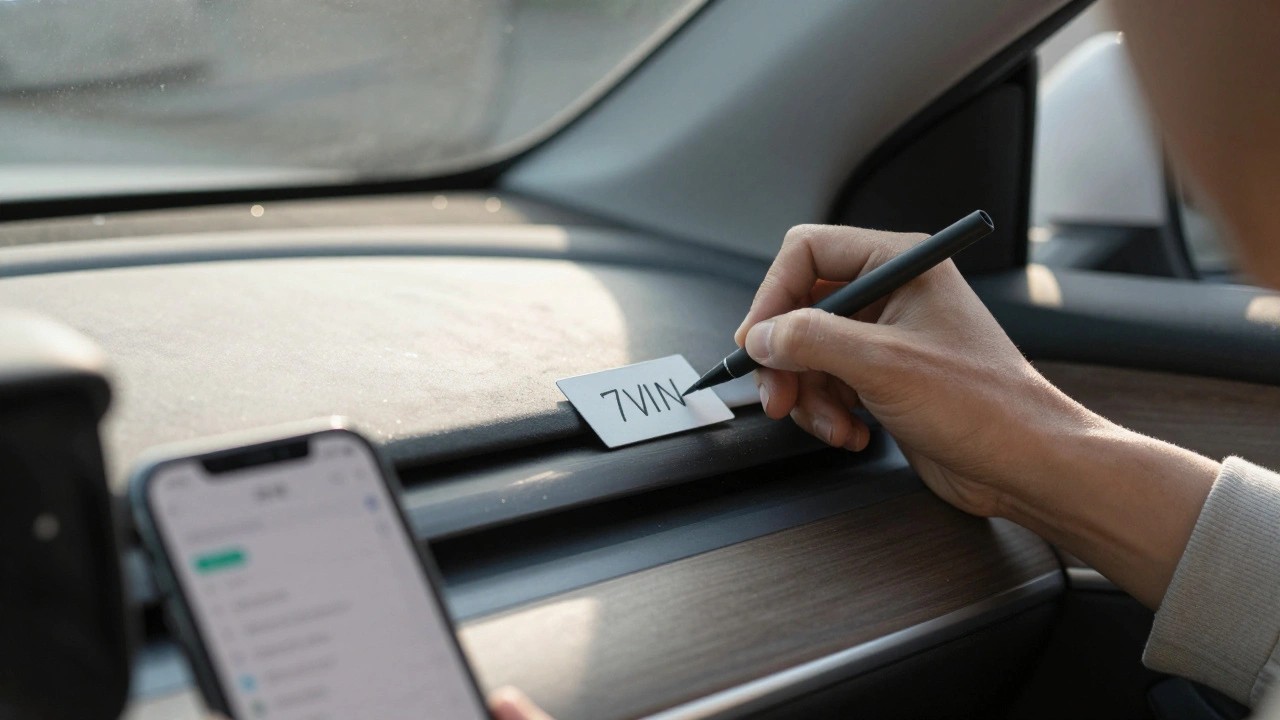


Mbuyiselwa Cindi
November 20, 2025 AT 03:43Just tried the 400-foot coast to the light today and actually stopped right at the line without touching the brake. Felt like a Jedi. The energy meter went wild green and my mpg jumped 3 points on that one stretch. Seriously, this stuff works if you just give it a chance.
Krzysztof Lasocki
November 20, 2025 AT 04:51Bro. You just described the entire reason I bought my Prius. I used to drive like a maniac until I learned to coast. Now I feel like I’m piloting a spaceship instead of a car. Also, my brake pads still look brand new after 78k miles. Who needs friction anyway?
Henry Kelley
November 20, 2025 AT 17:35im still trying to unlearn left foot braking. its like my foot has muscle memory from my old civic. but i did try lifting off early on my commute and wow. the car just... glides. no jolt. no revving. just chill. kinda zen.
Victoria Kingsbury
November 21, 2025 AT 06:25Regen isn’t magic-it’s thermodynamics with a UI. The system’s optimizing for energy recovery efficiency, not driver comfort. But honestly? The green bar feedback loop is the real hack. It’s operant conditioning disguised as a car feature. Your brain learns to associate smooth deceleration with reward. That’s why it sticks.
Tonya Trottman
November 22, 2025 AT 03:33you say 'don't charge to 100%' like it's gospel. but the manual says 100% is fine for long trips. also, your '70% is ideal' claim isn't cited. where's your NREL data on that? and why are you ignoring battery chemistry degradation curves? this post reads like a reddit fanfic written by a Toyota marketing intern.
Rocky Wyatt
November 23, 2025 AT 19:28you’re all missing the real point. this whole regen thing is just a distraction. the real fuel savings come from not driving at all. why are we even pretending we need cars? the system is rigged. they want you to think you’re saving gas so you keep buying hybrids. wake up.
Santhosh Santhosh
November 24, 2025 AT 07:25when i first got my hybrid, i thought coasting was just laziness. but after driving the same route for three months, i noticed something strange. the car seemed to anticipate the red lights before i even saw them. not because it was smart, but because i had trained myself to be patient. the rhythm of the road changed. i stopped fighting the traffic and started flowing with it. it’s less about technique and more about surrendering to the machine’s logic. you don’t control the car-you collaborate with it. and that changes everything.
Veera Mavalwala
November 25, 2025 AT 07:11oh honey, you think you’re some kind of hybrid guru? i’ve been driving my Ioniq since 2020 and let me tell you-your ‘one-pedal driving’ is just a fancy way of saying you’re too lazy to use your brakes. and don’t get me started on the ‘B mode’-that’s just your car screaming in protest because you’re treating it like a toy. real drivers use their feet, not their feelings.
Mike Marciniak
November 25, 2025 AT 17:00Regenerative braking is just a government-backed scam to sell more hybrids. The battery degradation data they don’t show you? It’s worse than gas engines. And that ‘energy meter’? It’s placebo feedback. You’re being manipulated into thinking you’re saving energy while the system slowly kills your battery. I’ve seen the documents.
VIRENDER KAUL
November 26, 2025 AT 01:09While the technical underpinnings of regenerative braking are commendable, the behavioral conditioning of drivers toward anticipatory deceleration remains an underexplored domain in human-machine interaction literature. The psychological shift from reactive to predictive control demands cognitive reprogramming, which is non-trivial in populations conditioned by decades of internal combustion norms. Furthermore, the economic benefit calculation presented-$67.50 annually-is statistically insignificant when contextualized against the total cost of ownership. The real value proposition lies not in marginal fuel savings, but in the reduction of brake maintenance intervals, which correlates positively with vehicle longevity metrics. A more rigorous analysis would require longitudinal telemetry data from a stratified sample across climatic zones.